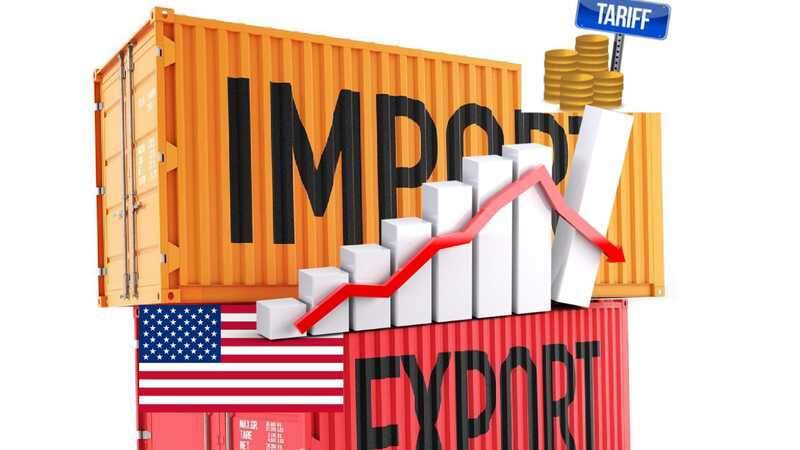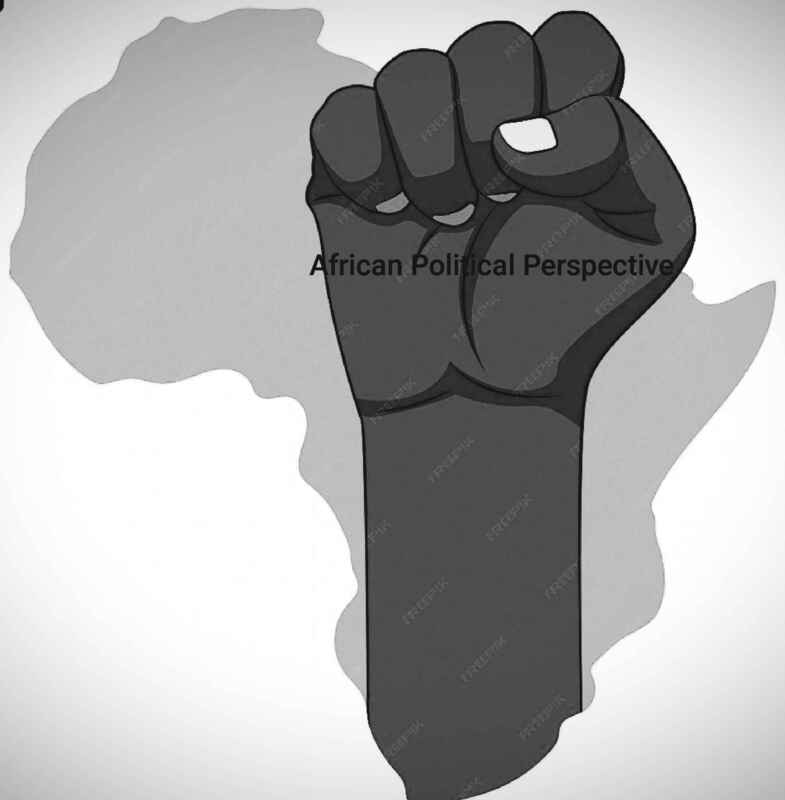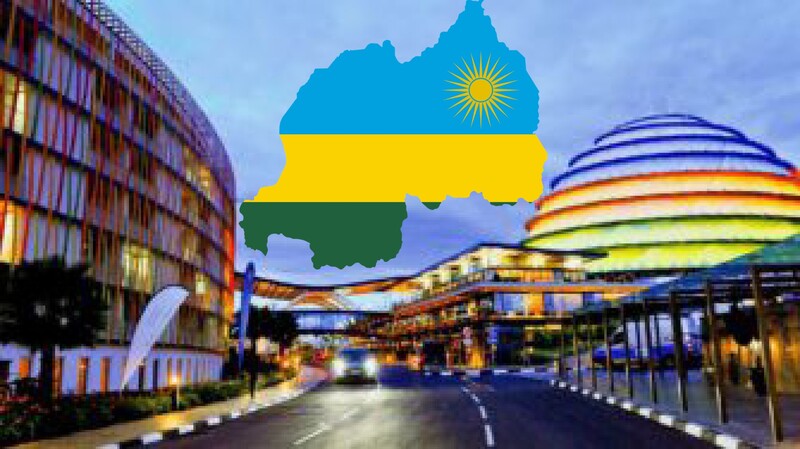Us Tariff Policies: Market Volatility And Global Impact
NorthAmerica
Markets
Since taking office, President Donald Trump has proposed several tariffs on imported products. Tariffs are taxes imposed by governments on imported goods, aimed at protecting domestic industries by making foreign products more expensive. Historically, tariffs have had a significant influence on trade relationships. For example, the Smoot-Hawley Tariff of 1930 raised duties on imports, triggering retaliatory measures and worsening the Great Depression in the U.S.
Proposed Tariffs and Market Reactions
President Trump’s proposed tariffs include a 10 percent increase on Chinese goods and 25 percent tariffs on imports from Canada, Mexico, and the European Union. The announcement of these tariffs has already impacted markets. Wall Street indices, including the Nasdaq composite, S&P 500, and Dow Jones Industrial Average, have experienced declines following confirmation of tariffs on Canadian goods. Economists agree that in the short term, these tariffs are likely to drive up consumer prices, though their full impact remains to be seen.
Forex Market Volatility and Exchange Rate Dynamics
Forex markets have also been affected by the proposed tariffs. The US dollar has risen, while the Canadian dollar (CAD) and Mexican peso (MXN) have fallen due to concerns about slowing growth and potential recessions in Canada and Mexico. The Australian and New Zealand dollars, proxies for the Chinese economy, have also come under pressure, along with the euro. Conversely, the yen and Swiss franc have gained strength from haven demand. Tariffs alter trade flows and currency demand, often boosting the local currency by lowering imports and improving trade balances.
Economic Implications of Trade Wars
Economists widely agree that trade wars create a "lose-lose situation" for all parties involved. Tit-for-tat policies can dampen economic activity and sentiment, with consumers bearing the brunt of increased costs. Analysts warn that this could escalate inflation in the U.S., while prolonged tariff wars may raise concerns about long-term economic growth and trade partnerships. For countries hit by tariffs, slower growth and potential recessions are likely outcomes.
Impact on US Imports and Broader Economic Costs
Canada, China, and Mexico account for about half of all U.S. imports, totaling over $1.3 trillion. Estimates suggest that new tariffs could lower imports by 15 percent. While additional federal tax revenue of $100 billion per year is expected, tariffs may also disrupt supply chains, raise business costs, eliminate jobs, and increase consumer prices. Striking a balance between the benefits and drawbacks of tariff imposition is essential to mitigate these adverse effects.
Effects on Key Trading Partners
Tariffs will significantly impact Canada and Mexico, where trade constitutes over 70 percent of GDP for both economies. More than 80 percent of Mexico’s exports, including cars, machinery, and agricultural products, are shipped to the U.S. Tariffs may reduce these trade flows, leading to economic challenges for these nations.
Balancing Pros and Cons of Tariff Policies
While tariffs can generate revenue, protect domestic industries, create jobs, and reduce trade deficits, they may also increase consumer prices, lead to retaliatory measures, limit consumer choices, and stifle innovation in domestic industries. Negotiating trade agreements that prioritize cooperation over conflict could help maintain strong economic ties with key trading partners and prevent retaliatory actions.
Strategic Approach to Trade Policies
To ensure long-term economic stability and competitiveness, the U.S. must strive for balanced trade policies. A cooperative approach can help mitigate the negative effects of tariffs, sustain strong trading relationships, and prevent isolation in the global economy.
Proposed Tariffs and Market Reactions
President Trump’s proposed tariffs include a 10 percent increase on Chinese goods and 25 percent tariffs on imports from Canada, Mexico, and the European Union. The announcement of these tariffs has already impacted markets. Wall Street indices, including the Nasdaq composite, S&P 500, and Dow Jones Industrial Average, have experienced declines following confirmation of tariffs on Canadian goods. Economists agree that in the short term, these tariffs are likely to drive up consumer prices, though their full impact remains to be seen.
Forex Market Volatility and Exchange Rate Dynamics
Forex markets have also been affected by the proposed tariffs. The US dollar has risen, while the Canadian dollar (CAD) and Mexican peso (MXN) have fallen due to concerns about slowing growth and potential recessions in Canada and Mexico. The Australian and New Zealand dollars, proxies for the Chinese economy, have also come under pressure, along with the euro. Conversely, the yen and Swiss franc have gained strength from haven demand. Tariffs alter trade flows and currency demand, often boosting the local currency by lowering imports and improving trade balances.
Economic Implications of Trade Wars
Economists widely agree that trade wars create a "lose-lose situation" for all parties involved. Tit-for-tat policies can dampen economic activity and sentiment, with consumers bearing the brunt of increased costs. Analysts warn that this could escalate inflation in the U.S., while prolonged tariff wars may raise concerns about long-term economic growth and trade partnerships. For countries hit by tariffs, slower growth and potential recessions are likely outcomes.
Impact on US Imports and Broader Economic Costs
Canada, China, and Mexico account for about half of all U.S. imports, totaling over $1.3 trillion. Estimates suggest that new tariffs could lower imports by 15 percent. While additional federal tax revenue of $100 billion per year is expected, tariffs may also disrupt supply chains, raise business costs, eliminate jobs, and increase consumer prices. Striking a balance between the benefits and drawbacks of tariff imposition is essential to mitigate these adverse effects.
Effects on Key Trading Partners
Tariffs will significantly impact Canada and Mexico, where trade constitutes over 70 percent of GDP for both economies. More than 80 percent of Mexico’s exports, including cars, machinery, and agricultural products, are shipped to the U.S. Tariffs may reduce these trade flows, leading to economic challenges for these nations.
Balancing Pros and Cons of Tariff Policies
While tariffs can generate revenue, protect domestic industries, create jobs, and reduce trade deficits, they may also increase consumer prices, lead to retaliatory measures, limit consumer choices, and stifle innovation in domestic industries. Negotiating trade agreements that prioritize cooperation over conflict could help maintain strong economic ties with key trading partners and prevent retaliatory actions.
Strategic Approach to Trade Policies
To ensure long-term economic stability and competitiveness, the U.S. must strive for balanced trade policies. A cooperative approach can help mitigate the negative effects of tariffs, sustain strong trading relationships, and prevent isolation in the global economy.
MARCH 6, 2025 AT 1:12 PM
The Evolution Of African Politics: Past, Present, And Future
Africa
Politics
African politics traces its origins to its pre-colonial history, where diverse systems of governance flourished. Societies were organized into centralized kingdoms, such as the Zulu and Ashanti empires, and decentralized tribal structures. These systems were often governed by traditional leaders, councils, and communal decision-making processes that reflected the distinct cultural and social contexts of each region.
Impact of Colonialism on African Governance (Late 19th Century)
The colonial era, which began in the late 19th century, brought significant disruption to Africa's traditional political systems. European powers imposed arbitrary borders, exploited resources, and established authoritarian administrative structures that served colonial interests. These changes left a legacy of fragmented institutions, ethnic divisions, and economies heavily reliant on external forces, shaping the continent's post-independence challenges.
The Struggle for Independence and Post-Colonial Challenges (1950s–1980s)
The mid-20th century marked a turning point as African nations fought for independence. While the transition to self-rule brought hope, it was often accompanied by power struggles and ideological conflicts. During the post-independence period (1950s–1980s), many countries adopted socialist or capitalist models influenced by Cold War dynamics. However, weak institutions, widespread authoritarianism, and economic mismanagement led to turmoil. Military coups became prevalent, with leaders like Mobutu Sese Seko in Zaire and Idi Amin in Uganda symbolizing the era's excesses.
The One-Party State Era Many African nations adopted one-party state systems to consolidate power and suppress political dissent. Examples include:
Impact of Colonialism on African Governance (Late 19th Century)
The colonial era, which began in the late 19th century, brought significant disruption to Africa's traditional political systems. European powers imposed arbitrary borders, exploited resources, and established authoritarian administrative structures that served colonial interests. These changes left a legacy of fragmented institutions, ethnic divisions, and economies heavily reliant on external forces, shaping the continent's post-independence challenges.
The Struggle for Independence and Post-Colonial Challenges (1950s–1980s)
The mid-20th century marked a turning point as African nations fought for independence. While the transition to self-rule brought hope, it was often accompanied by power struggles and ideological conflicts. During the post-independence period (1950s–1980s), many countries adopted socialist or capitalist models influenced by Cold War dynamics. However, weak institutions, widespread authoritarianism, and economic mismanagement led to turmoil. Military coups became prevalent, with leaders like Mobutu Sese Seko in Zaire and Idi Amin in Uganda symbolizing the era's excesses.
The One-Party State Era Many African nations adopted one-party state systems to consolidate power and suppress political dissent. Examples include:
- Ghana: Convention People's Party (CPP) under Kwame Nkrumah (1964–1966).
- Tanzania: Chama Cha Mapinduzi (CCM) under Julius Nyerere (1965–1990s).
- Malawi: Malawi Congress Party (MCP) under Hastings Banda (1966–1993).
- Zambia: United National Independence Party (UNIP) under Kenneth Kaunda (1972–1991).
- Kenya: Kenya African National Union (KANU) under Jomo Kenyatta and Daniel Arap Moi (1969–1991).
- Uganda: National Resistance Movement (NRM) under Milton Obote and later Idi Amin (1986–2005).
- Mozambique: Mozambique Liberation Front (FRELIMO) under Samora Machel (1975–1990).
- Angola: Popular Movement for the Liberation of Angola (MPLA) under Agostinho Neto and later José Eduardo dos Santos (1975–1991).
Despite these challenges, countries such as Botswana and Mauritius succeeded in building relatively stable and democratic systems, demonstrating Africa’s potential for good governance.
Democratization and Uneven Progress (1990s)
The end of the Cold War in the early 1990s ushered in a wave of democratization across Africa. Internal pro-democracy movements and external pressure led to constitutional reforms, the adoption of multi-party systems, and regular elections. South Africa emerged as a beacon of democracy after the end of apartheid, while countries like Ghana and Senegal achieved significant political openness. However, this wave of democratization was inconsistent. Electoral fraud, violence, and the manipulation of term limits often undermined democratic consolidation, with "big man" politics continuing to prioritize personal gain over public service.
The Role of Civil Society and Independent Media in Accountability
Civil society organizations, independent media, and youth-led movements have played pivotal roles in holding leaders accountable. Organizations like Transparency International, AfriCOG (Africa Centre for Open Governance) in Kenya, and SERAP (Socio-Economic Rights and Accountability Project) in Nigeria have exposed corruption and advocated for transparency. Investigative media outlets such as South Africa's Daily Maverick and The Continent have uncovered scandals and amplified marginalized voices. Social media has further empowered grassroots activism, with movements like #EndSARS in Nigeria protesting police brutality and FeesMustFall in South Africa demanding accessible education.
Economic Growth and Persistent Challenges
Africa's economy is experiencing growth, bolstered by a burgeoning middle class and increased foreign investment. Nonetheless, persistent challenges include corruption, weak institutions, inequality, and conflicts in regions like the Sahel, the Horn of Africa, and the Great Lakes. Climate change exacerbates these issues by intensifying food insecurity and displacement, adding new layers of political pressure.
Future of African Politics and Emerging Trends
Africa’s youthful population, with over 60% under the age of 25, presents both opportunities and challenges. When effectively harnessed, this demographic potential could drive innovation, economic growth, and political reform. Technological advancements in digital governance and fintech offer tools to improve transparency and service delivery.
Regional integration efforts, like the African Continental Free Trade Area (AfCFTA), could bolster economic and political cooperation. On the global stage, Africa’s geopolitical importance continues to grow due to its resources, expanding markets, and strategic significance. However, external actors, including former colonial powers and emerging players like China, will continue to influence African politics, sometimes undermining local agency. Climate change also remains a critical factor, with the potential to exacerbate conflicts and displacement.
Africa at a Crossroads
African politics is at a pivotal moment. The continent’s rich history, cultural diversity, and immense potential provide a solid foundation for progress. However, addressing governance issues, corruption, inequality, and climate change is critical to realizing this potential. The decisions made by African leaders, citizens, and the international community in the coming years will determine whether Africa emerges as a global powerhouse or remains mired in cycles of instability. By learning from history and taking decisive action, Africa can shape a transformative future.f instability.
MARCH 5, 2025 AT 7:52 PM
United States Vs. China: Is The Fear Of Competition Driving...
NorthAmerica
Technology
Deepseek, developed by a Chinese firm in Hangzhou, China, has emerged as the most popular AI model in the country. Founded in 2023 by Liang Wenfeng, Deepseek aims to redefine AI by addressing inefficiencies and high development costs seen in existing models. Despite its advancements, the model faces challenges that require ongoing improvement.
China vs. US: The AI Superpower Rivalry
China and the United States have long competed for dominance in technology and innovation. This rivalry extends to AI development, with the US boasting models like ChatGPT, Pi, Claude, and Gemini, while China counters with Baidu’s Ernie, Moonshot AI’s Kimi, and Deepseek. The competition raises questions about whether the US actions against Deepseek are driven by genuine concerns or fear of losing its technological edge.
Security Concerns Surrounding Deepseek
In the past year, Deepseek has faced scrutiny over security and data privacy issues. Countries like Australia and the US have raised concerns about database leaks and consumer protection. Liang Wenfeng, however, assures that Deepseek is still developing and should not be dismissed prematurely. The model’s origin in finance rather than tech adds complexity to the debate.
US Sanctions and Allegations
The US has accused Deepseek of misappropriating proprietary AI technology and infringing intellectual property rights. Trump's nominee for secretary of commerce, Lutnick, vowed to impose sanctions to maintain the US’s competitive edge. Deepseek has already been banned in certain sectors, including government devices and the US Navy, citing national security concerns.
Competition or Fear?
While the allegations against Deepseek remain unproven, the US’s actions suggest a deeper fear of competition. Deepseek’s ability to develop advanced AI at a fraction of the cost incurred by US firms has sparked discussions about the efficiency of the American tech industry. Critics argue that the US should focus on improving its own AI models rather than restricting China’s advancements.
The Path Forward for Deepseek
Despite the challenges, Deepseek continues to make progress in its development. Liang Wenfeng acknowledges the gaps in the model but emphasizes the importance of innovation and improvement in tech. As the US plans further sanctions, it faces criticism for prioritizing competition over collaboration.
Innovation Amid Rivalry
Deepseek represents a significant step forward in AI development, showcasing China’s growing capabilities in the tech sector. While the US raises concerns about security and privacy, the underlying fear of competition cannot be ignored. Rather than imposing restrictions, fostering innovation and collaboration could pave the way for mutual growth in AI technology.
China vs. US: The AI Superpower Rivalry
China and the United States have long competed for dominance in technology and innovation. This rivalry extends to AI development, with the US boasting models like ChatGPT, Pi, Claude, and Gemini, while China counters with Baidu’s Ernie, Moonshot AI’s Kimi, and Deepseek. The competition raises questions about whether the US actions against Deepseek are driven by genuine concerns or fear of losing its technological edge.
Security Concerns Surrounding Deepseek
In the past year, Deepseek has faced scrutiny over security and data privacy issues. Countries like Australia and the US have raised concerns about database leaks and consumer protection. Liang Wenfeng, however, assures that Deepseek is still developing and should not be dismissed prematurely. The model’s origin in finance rather than tech adds complexity to the debate.
US Sanctions and Allegations
The US has accused Deepseek of misappropriating proprietary AI technology and infringing intellectual property rights. Trump's nominee for secretary of commerce, Lutnick, vowed to impose sanctions to maintain the US’s competitive edge. Deepseek has already been banned in certain sectors, including government devices and the US Navy, citing national security concerns.
Competition or Fear?
While the allegations against Deepseek remain unproven, the US’s actions suggest a deeper fear of competition. Deepseek’s ability to develop advanced AI at a fraction of the cost incurred by US firms has sparked discussions about the efficiency of the American tech industry. Critics argue that the US should focus on improving its own AI models rather than restricting China’s advancements.
The Path Forward for Deepseek
Despite the challenges, Deepseek continues to make progress in its development. Liang Wenfeng acknowledges the gaps in the model but emphasizes the importance of innovation and improvement in tech. As the US plans further sanctions, it faces criticism for prioritizing competition over collaboration.
Innovation Amid Rivalry
Deepseek represents a significant step forward in AI development, showcasing China’s growing capabilities in the tech sector. While the US raises concerns about security and privacy, the underlying fear of competition cannot be ignored. Rather than imposing restrictions, fostering innovation and collaboration could pave the way for mutual growth in AI technology.
MARCH 5, 2025 AT 1:39 PM
Rwanda's Rise From The Ashes: Leading Africa's Innovation And Tech...
Africa
Innovation
In the heart of East Africa, Rwanda is rapidly emerging as a hub of technological advancement and business innovation. While the country is often remembered for its tragic past, the 1994 genocide, where an estimated 800,000 people lost their lives in just 100 days, it has demonstrated remarkable resilience. This dark chapter has not hindered Rwanda’s ambition to position itself as a leader in Africa across multiple sectors.
Rising from the Ashes: Rwanda’s Transformation
Despite its painful history, Rwanda has risen from devastation to become a leader in driving growth, improving governance, and fostering entrepreneurship. Traditionally, African nations such as Nigeria, Kenya, and South Africa have dominated the continent’s tech landscape, owing to their youthful, tech-savvy populations. However, Rwanda is setting a new benchmark with ambitious government policies, a thriving startup ecosystem, and world-class infrastructure.
Digital Transformation: Rwanda’s Vision 2050 Strategy
A key advantage for Rwanda is its government’s strong commitment to digital transformation. Through its Vision 2050 strategy, Rwanda aims to evolve into a knowledge-based economy by prioritizing investments in:
Rising from the Ashes: Rwanda’s Transformation
Despite its painful history, Rwanda has risen from devastation to become a leader in driving growth, improving governance, and fostering entrepreneurship. Traditionally, African nations such as Nigeria, Kenya, and South Africa have dominated the continent’s tech landscape, owing to their youthful, tech-savvy populations. However, Rwanda is setting a new benchmark with ambitious government policies, a thriving startup ecosystem, and world-class infrastructure.
Digital Transformation: Rwanda’s Vision 2050 Strategy
A key advantage for Rwanda is its government’s strong commitment to digital transformation. Through its Vision 2050 strategy, Rwanda aims to evolve into a knowledge-based economy by prioritizing investments in:
- ICT infrastructure
- Digital literacy
- E-governance
Initiatives like Smart Rwanda, which seeks to emulate Singapore’s technological success, and partnerships with companies such as Zipline, a California-based robotics company providing medical drone deliveries, illustrate Rwanda’s focus on integrating technology into public services.
Comparing Rwanda’s Tech Approach to Other Nations
While nations like Nigeria and Kenya have strong private-sector-driven innovation, challenges in infrastructure and governance remain a barrier. South Africa, although advanced in fintech and AI, has been slower in government-led tech adoption compared to Rwanda. Rwanda’s proactive, government-driven approach stands out as a model for African innovation.
Kigali Innovation City: A Hub for Entrepreneurship
One of Rwanda’s flagship initiatives is Kigali Innovation City, modeled after Silicon Valley. This hub hosts:
- Incubators
- Tech firms
- Research institutions
It aims to foster entrepreneurship and innovation. The government has also created a business-friendly environment by offering attractive tax incentives, such as:
- A 7-year tax holiday for industries in manufacturing, health, energy, and tourism.
- A 5-year tax holiday for microfinance institutions and businesses operating within innovation parks.
- A 0% Corporate Income Tax for international companies with regional offices in Rwanda or philanthropic organizations.
These incentives make Rwanda an appealing location for startups and international businesses.
Competing with Africa’s Giants
Kenya’s Silicon Savannah remains a strong contender, home to giants like M-Pesa and Andela. Nigeria excels in fintech innovation, with companies like Flutterwave achieving international recognition. However, Rwanda’s advantage lies in its ease of doing business, ranked among the best in Africa by the World Bank. This makes Rwanda particularly attractive to startups and investors.
Digital Financial Inclusion: Rwanda’s Edge
Rwanda is quickly digitizing its financial sector, with impressive mobile money penetration. The MoMo Pay system, powered by MTN Rwanda, has facilitated widespread cashless transactions, supporting SMEs and boosting e-commerce growth.
While Nigeria and South Africa boast mature fintech ecosystems with robust banking and international investments, Rwanda’s government-backed model of digital financial inclusion could inspire other African nations to expand financial access in rural areas.
Investing in Emerging Technologies
Rwanda isn’t stopping at existing technologies, it’s actively investing in:
- Artificial Intelligence (AI): Accelerating adoption through fast-track policies.
- Blockchain: Utilizing blockchain for land registry and healthcare data management.
- Robotics: Exploring robotics for public services and innovation.
- Although South Africa and Nigeria lead in AI research, Rwanda’s quick policy implementation enables faster adoption of cutting-edge technologies, setting an example for other nations.
Lessons for Other African Nations
Rwanda’s success provides valuable insights for other countries:
- Proactive Government Support: Demonstrates how policies and investment in digital infrastructure can drive growth.
- Ease of Doing Business: Highlights the importance of transparent regulations and tax incentives in attracting investors.
- Leveraging Tech for Public Services: Shows how drones, e-governance, and mobile payments can transform everyday life.
Punching Above Its Weight
Despite its small size, Rwanda is proving to be a major player in business innovation and technology. By combining government-backed policies with a thriving private sector, Rwanda is solidifying its position as a leading tech hub in Africa. For other nations, Rwanda’s journey offers a blueprint for building a digitally driven, innovation-powered future.
FEBRUARY 28, 2025 AT 1:32 PM
China’s Gdp Growth Through Ai: A Double Edged Sword Of...
Asia
Business
Artificial intelligence is the new workforce language around the globe, with most sectors embracing this technology to match the current technological wave. From health, logistics, education, biotech, defence & aerospace, finance and investment, retail and commerce they have integrated AI in their operations.
AI in China: Historical Roots and Current Landscape
Introducing AI and AI-powered services and processes in China presents a complex landscape concerning GDP and the labor market. Although the roots of AI in China are traced to the 1970s, the Chinese government embraced AI in the early 2000s. Baidu’s Ernie Bot is the most used AI in China and is mostly preferred due to its efficiency in understanding the natural Chinese language.
Economic Growth and AI’s Role in China
The International Monetary Fund (IMF) data indicates that as of 2025, the Chinese GDP is around 19.5 trillion dollars, marking a growth rate of about 2.8% and an estimated growth rate of about 4.5% in 2026. The growth is attributed to various factors, including manufacturing and high-tech investment, which have relied on AI.
AI’s Impact on the Labor Market
AI has taken over most sectors in the Chinese community and the globe, which are economically and socially impactful. While the country trains employees to work in various fields, the automation of processes has a detrimental impact on the labor market, including outpacing new job creation. According to the IMF, AI is likely to affect 40% of jobs globally, and the Chinese workforce is no exception.
Balancing GDP Growth and Job Losses
Despite the argument that AI is contributing to the growing GDP of China, there is a need to evaluate the contribution of job losses to the GDP and whether it is likely to hinder anticipated GDP growth. It is key to evaluate probable outcomes and develop strategies to maintain a balance and steer economic growth.
Confidence in AI Models and Regional Trends
According to the IZEA China Trust report, Chinese individuals are more comfortable engaging with AI influencers compared to Americans. This demonstrates the level of confidence in AI models in China and most Asian countries. Increased AI livestream hosts and high audience engagement further reflect this trend.
AI’s Role in Economic Growth Across Asia
The Asian continent, led by China, has historically been known for its innovation and embracement of technology. In China and Singapore, AI has steered economic growth through sectors such as logistics, healthcare, and manufacturing.
Automation and Workforce Challenges
In the next two decades, China looks forward to further automating about 26% of existing jobs, creating a different scenario for the livelihood and survival of Chinese employees. Despite the positive implications of AI, such as the anticipated GDP growth of 10-18% by 2030, it is critical to evaluate whether policies are protecting the well-being of employees.
The Shrinking Labor Market and Economic Slowdown
The labor market is already shrinking. Software development, education, healthcare, finance, customer service, and sales have faced worker displacement and decline. Although China is undergoing a recession after the Covid-19 pandemic, it is also experiencing an economic slowdown due to a shrinking workforce and other factors.
The Need for Balanced Policies
China, in its quest to dominate AI and overtake the US, must consider creating a balance to mitigate economic challenges due to innovation. The Chinese government should develop policies that maximize AI benefits while mitigating impacts such as income inequality and job displacement.
AI in China: Historical Roots and Current Landscape
Introducing AI and AI-powered services and processes in China presents a complex landscape concerning GDP and the labor market. Although the roots of AI in China are traced to the 1970s, the Chinese government embraced AI in the early 2000s. Baidu’s Ernie Bot is the most used AI in China and is mostly preferred due to its efficiency in understanding the natural Chinese language.
Economic Growth and AI’s Role in China
The International Monetary Fund (IMF) data indicates that as of 2025, the Chinese GDP is around 19.5 trillion dollars, marking a growth rate of about 2.8% and an estimated growth rate of about 4.5% in 2026. The growth is attributed to various factors, including manufacturing and high-tech investment, which have relied on AI.
AI’s Impact on the Labor Market
AI has taken over most sectors in the Chinese community and the globe, which are economically and socially impactful. While the country trains employees to work in various fields, the automation of processes has a detrimental impact on the labor market, including outpacing new job creation. According to the IMF, AI is likely to affect 40% of jobs globally, and the Chinese workforce is no exception.
Balancing GDP Growth and Job Losses
Despite the argument that AI is contributing to the growing GDP of China, there is a need to evaluate the contribution of job losses to the GDP and whether it is likely to hinder anticipated GDP growth. It is key to evaluate probable outcomes and develop strategies to maintain a balance and steer economic growth.
Confidence in AI Models and Regional Trends
According to the IZEA China Trust report, Chinese individuals are more comfortable engaging with AI influencers compared to Americans. This demonstrates the level of confidence in AI models in China and most Asian countries. Increased AI livestream hosts and high audience engagement further reflect this trend.
AI’s Role in Economic Growth Across Asia
The Asian continent, led by China, has historically been known for its innovation and embracement of technology. In China and Singapore, AI has steered economic growth through sectors such as logistics, healthcare, and manufacturing.
Automation and Workforce Challenges
In the next two decades, China looks forward to further automating about 26% of existing jobs, creating a different scenario for the livelihood and survival of Chinese employees. Despite the positive implications of AI, such as the anticipated GDP growth of 10-18% by 2030, it is critical to evaluate whether policies are protecting the well-being of employees.
The Shrinking Labor Market and Economic Slowdown
The labor market is already shrinking. Software development, education, healthcare, finance, customer service, and sales have faced worker displacement and decline. Although China is undergoing a recession after the Covid-19 pandemic, it is also experiencing an economic slowdown due to a shrinking workforce and other factors.
The Need for Balanced Policies
China, in its quest to dominate AI and overtake the US, must consider creating a balance to mitigate economic challenges due to innovation. The Chinese government should develop policies that maximize AI benefits while mitigating impacts such as income inequality and job displacement.
FEBRUARY 27, 2025 AT 1:59 PM
Financial Literacy Crisis: Bridging The Present And Future Of Kenya's...
Africa
Business
Financial literacy, the ability to understand and effectively manage financial matters, is essential for individual prosperity and national economic growth. However, in Kenya, financial literacy levels are alarmingly low, with only 38% of adults demonstrating basic financial understanding. This deficiency has far-reaching implications, including increased poverty rates, limited financial inclusion, and economic inequality.
Global and Regional Financial Literacy Comparisons
A global survey revealed that many Kenyans struggle with fundamental financial concepts such as risk diversification, interest calculations, and transaction costs. In contrast, European countries boast high financial literacy rates, with Denmark, Norway, and Sweden at 71% and Canada at 68%. Globally, only 33% of adults are financially literate, leaving 67%or 3.5 billion people lacking basic financial knowledge.
In Africa, Botswana leads with a financial literacy rate of 52%, followed by South Africa at 42% and Kenya at 38%. Somalia ranks lowest in the region, with a rate of just 15%. This disparity underscores the urgent need for comprehensive financial education initiatives in Kenya and beyond.
The Impact of Mobile Loans and Debt Management
The rise of mobile loan applications has made borrowing more accessible, but many users lack an understanding of interest rates and repayment terms. By May 2023, approximately 19.97 million loan accounts were blacklisted by the Credit Reference Bureau, reflecting widespread challenges in debt management. This financial instability limits access to future credit and exacerbates economic hardships for many Kenyans.
Savings Behaviors and Investment Awareness
While 74% of Kenyans reportedly engage in saving behaviors, most rely on mobile money wallets, which offer minimal interest and lack long-term growth potential. This trend highlights the need for increased awareness of diversified savings and investment instruments that can yield better returns and promote financial security.
The Role of Education in Financial Literacy
Kenya’s education system lacks a standardized curriculum focusing on personal finance, leaving graduates unprepared to navigate financial challenges. Integrating financial education into schools could equip students with essential skills for financial well-being. Gender disparities in saving behaviors also persist, with 74% of men saving compared to 73% of women in 2021. Targeted interventions are needed to promote financial inclusion for all.
The Influence of Informal Financial Systems
Many Kenyans rely on informal financial systems like chamas (savings groups), which, while beneficial, may not provide comprehensive financial tools and knowledge. Factors such as high banking fees, strict loan requirements, and long distances to bank branches push many toward these informal systems. However, this reliance can limit exposure to formal financial education, structured investments, and modern banking services.
Including financial education within chamas and encouraging members to engage with formal financial institutions could help bridge the financial literacy gap.
Initiatives to Enhance Financial Literacy
Organizations like the Kenya Bankers Association have launched campaigns to improve public understanding of financial matters. Collaborative efforts between financial institutions, educational bodies, and the government can amplify these initiatives, ensuring they reach diverse populations, including those in rural areas.
Regulating Mobile Loan Providers
The government should enforce stricter regulations on mobile loan providers to ensure transparency in interest rates and lending terms. Such measures can protect consumers from predatory lending practices and promote responsible borrowing.
Bridging the Financial Literacy Gap
Addressing Kenya’s low financial literacy levels is crucial for fostering individual financial stability and national economic development. By implementing comprehensive education programs, promoting inclusive financial practices, and regulating lending platforms, stakeholders can work together to bridge the financial literacy gap. Empowering Kenyans with the knowledge and tools to manage their finances effectively will pave the way for a more sustainable and prosperous society.
Global and Regional Financial Literacy Comparisons
A global survey revealed that many Kenyans struggle with fundamental financial concepts such as risk diversification, interest calculations, and transaction costs. In contrast, European countries boast high financial literacy rates, with Denmark, Norway, and Sweden at 71% and Canada at 68%. Globally, only 33% of adults are financially literate, leaving 67%or 3.5 billion people lacking basic financial knowledge.
In Africa, Botswana leads with a financial literacy rate of 52%, followed by South Africa at 42% and Kenya at 38%. Somalia ranks lowest in the region, with a rate of just 15%. This disparity underscores the urgent need for comprehensive financial education initiatives in Kenya and beyond.
The Impact of Mobile Loans and Debt Management
The rise of mobile loan applications has made borrowing more accessible, but many users lack an understanding of interest rates and repayment terms. By May 2023, approximately 19.97 million loan accounts were blacklisted by the Credit Reference Bureau, reflecting widespread challenges in debt management. This financial instability limits access to future credit and exacerbates economic hardships for many Kenyans.
Savings Behaviors and Investment Awareness
While 74% of Kenyans reportedly engage in saving behaviors, most rely on mobile money wallets, which offer minimal interest and lack long-term growth potential. This trend highlights the need for increased awareness of diversified savings and investment instruments that can yield better returns and promote financial security.
The Role of Education in Financial Literacy
Kenya’s education system lacks a standardized curriculum focusing on personal finance, leaving graduates unprepared to navigate financial challenges. Integrating financial education into schools could equip students with essential skills for financial well-being. Gender disparities in saving behaviors also persist, with 74% of men saving compared to 73% of women in 2021. Targeted interventions are needed to promote financial inclusion for all.
The Influence of Informal Financial Systems
Many Kenyans rely on informal financial systems like chamas (savings groups), which, while beneficial, may not provide comprehensive financial tools and knowledge. Factors such as high banking fees, strict loan requirements, and long distances to bank branches push many toward these informal systems. However, this reliance can limit exposure to formal financial education, structured investments, and modern banking services.
Including financial education within chamas and encouraging members to engage with formal financial institutions could help bridge the financial literacy gap.
Initiatives to Enhance Financial Literacy
Organizations like the Kenya Bankers Association have launched campaigns to improve public understanding of financial matters. Collaborative efforts between financial institutions, educational bodies, and the government can amplify these initiatives, ensuring they reach diverse populations, including those in rural areas.
Regulating Mobile Loan Providers
The government should enforce stricter regulations on mobile loan providers to ensure transparency in interest rates and lending terms. Such measures can protect consumers from predatory lending practices and promote responsible borrowing.
Bridging the Financial Literacy Gap
Addressing Kenya’s low financial literacy levels is crucial for fostering individual financial stability and national economic development. By implementing comprehensive education programs, promoting inclusive financial practices, and regulating lending platforms, stakeholders can work together to bridge the financial literacy gap. Empowering Kenyans with the knowledge and tools to manage their finances effectively will pave the way for a more sustainable and prosperous society.
FEBRUARY 26, 2025 AT 9:20 PM





